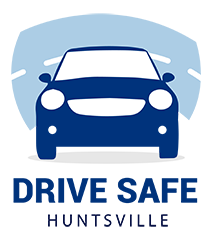Freeway Interchanges
 Most of the time when you leave a freeway, it is to resume travel on smaller, local roads. Other times though, you will want to travel from one freeway directly to another. For that purpose, we have interchanges. As you pass along a freeway, you might occasionally see multiple levels of roads. Chances are, you are passing by an interchange. Of course, if you are paying attention, you should see exit signs denoting that the ramp leads to another main freeway.
Most of the time when you leave a freeway, it is to resume travel on smaller, local roads. Other times though, you will want to travel from one freeway directly to another. For that purpose, we have interchanges. As you pass along a freeway, you might occasionally see multiple levels of roads. Chances are, you are passing by an interchange. Of course, if you are paying attention, you should see exit signs denoting that the ramp leads to another main freeway.
There are a few common types of interchanges
that you should be familiar with:
- Cloverleaf interchanges are common. When many people hear the word “interchange”, cloverleaf usually comes to mind. As the name implies, cloverleaf interchanges have loop type connections. There is four directional access and no need for drivers to cross the path of existing traffic. Cloverleaf interchanges also eliminate the need for you to stop and wait for clearance to make a left turn.
- Directional interchanges are used in places where there is always a large amount of traffic. In most cases, traffic on a directional interchange will be looking to go from their current path to only one other directional option.
- With trumpet interchanges, think “T for trumpet.” You will have the option at the end of the ramp to go left or right.
- Diamond interchanges allow you to keep with the flow of existing traffic whether you are entering or leaving the freeway. They have four ramps. If you need to turn left, you will not do so until you have exited the freeway.
Some final thoughts on freeway driving:
- NEVER back up if you miss your exit. Proceed to the next one and double back.
- Never cross over the median strip to change your direction of travel. Do so only at marked exits.
- Remember the fact that motorcycles behind you may drift back and forth within their lanes. This is actually normal and legal behavior. Remain watchful for them.
- Always do your best to keep your vehicle in the middle of your travel lane. Avoid drifting. You can cause another driver to react to your swaying closer to them.
- Tractor trailers traveling at high speeds require a great deal of stopping time and distance. Avoid driving alongside trucks for too long and don’t follow them too closely.

- Do not be afraid to lower your speed on freeways in poor weather. Slick road conditions are definitely more challenging when you travel on roads with high speed limits. In the snow, passing vehicles can throw massive piles of slush onto your windshield, blinding you for a few seconds. In the rain, hydroplaning should be a much greater concern.
- Be aware of highway hypnosis. On long, straight stretches or road, too much focus on painted lines as they pass under your vehicle can cause you to become disoriented. Always use your scanning techniques. In addition to avoiding highway hypnosis, you will be practicing good defensive driving routines when you scan.
- If you must make a right turn from a four lane highway, get into the far right lane well before your turn. Signal and turn into the far right lane of the cross street. Remember, do not make a wide swing to execute your turn.
- To make a left turn from a four lane highway, be sure you are in the left lane closest to the median or center line. Turn into the far left lane of the cross street. If signs or other markings allow you to make a left from a lane other that the one closest to the center line, turn into that same lane on the cross street.
